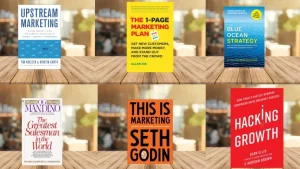In the social media context, Facebook has managed to continue its reign into the year 2025 and holds around 3.07 billion monthly active users now, a staggering percentage of the world’s entire population. Such an immense user base has opened up chances that are not possible for most businesses to promote products or connect with potential customers. Unfortunately, as the platform moves beyond the changing algorithms for competition, so it starts requiring a more strategic and knowledgeable method to sell products on Facebook.
Understand all the trending topics, the behavior of users, and the tools for advertising. The guide elaborates on the best known tactics and strategies for product promotion on Facebook in 2025, which will be useful for helping you ramp up on marketing and see results.
Understanding Facebook’s Current Landscape
Facebook is popular with people all over the world, young and old, from all walks of life, with interests ranging from the mundane to the esoteric. A striking trend in 2025 is the renewal of younger users, who are seeing an upswing in daily active young adults. Such a transition is an opportunity for brands interested in targeting this specific demographic to try to rekindle their interest or gain their attention in new ways.
One of the things Facebook does constantly is to update its platform for better user experience and tools for better use by business. The platform has introduced a few features over the years, e.g., enhanced e-commerce integration, advanced AI advertising tools, and improved data protection. Following these updates is an absolute must for businesses looking to leverage the platform.

Revenue Streams on Facebook
Firms diversify their earnings sources and achieve the highest profits by analyzing Facebook’s different revenue sources.
| Revenue Stream | Description | Example |
| Advertising Revenue | Income generated from businesses paying to display ads to users. | Sponsored posts appearing in users’ news feeds. |
| E-commerce Integrations | Earnings from selling products directly through Facebook’s shopping features. | Utilizing Facebook Shops to showcase and sell products. |
| Subscription Models | Revenue from users subscribing to exclusive content or groups. | Offering premium content in a closed Facebook Group for a monthly fee. |
| Partnerships and Collaborations | Income from collaborations with other brands or influencers on the platform. | Co-hosting events or campaigns with complementary brands to reach a broader audience. |
Advertising Revenue
Facebook has advertising as the primary source of revenue, accounting for about 97.5% of the revenue from ads and a whopping total productivity of 164.5 billion dollars in advertisements for the business for this year 2024, after having an annual compound growth rate of a whopping 21.9%.
Most of that revenue comes from the US and Canada. It may only comprise 8.9% of the total Facebook users, but it defines a difference of over $72 billion in income, which shows the differences of average revenue per user (ARPU).
Facebook has always been affected financially by mobile advertisements, and as it turns out, 94% of its revenue from advertising comes from mobile devices. It means that advertisers now are fully aware of how much they should involve a mobile in enabling social networking and other online activities.
It is the efficiency of the reach across 3.06 billion users that helps in fine targeting, and the features like audience segmentation, behavioral targeting, and retargeting keep it very precise in delivering personalized messages.

E-commerce Integrations
What makes Facebook a core player in e-commerce? Huge active users- More than 3 billion monthly active users. It allows showcasing and selling products directly to customers without letting businesses incur extra costs.
Facebook Shops: The Experience of Shopping From Home
Facebook Shops was introduced to make online purchases easier. It allows businesses to build personalized e-commerce storefronts on their Facebook and Instagram pages. This way, users can browse through an app, without switching apps, create orders, and finish sales within the app. By using augmented reality tools, it renders the experience immersive for consumers, who can now visualize products in reality and determine whether or not to buy them.
Facebook Marketplace and its advantages
Facebook Marketplace, an adjunct to Facebook Shops, is a simple listing forum for individual sellers and businesses to sell their products to local communities. As of 2024, Facebook Marketplace has been able to attract more than 1.1 billion users around the world, further signifying its position in the social commerce space. Notably, in 2021, it reported close to $26 billion in revenue, compared to the previous year’s figure of about $18 billion, reflecting a staggering increase of 48%.

Subscription Models
Subscription models enabling monthly payments would create ad-free and exclusive extent access for the users. The ability of the firm to diversify streams and respond to changing regulatory conditions would come into existence since subscriptions are meant to give the users some level of choice over personalized ads and the use of their data.
Key Features
- Ad-Free: All subscribers will be able to enjoy the platform without interruption from any advertising.
- Data Privacy: If concerning a subscription, it gives customers control over their data and its targeting.
Such subscriptions were likely meant to ward off almost all privacy choices posed by the larger user community, particularly in the European Union, where data protection laws impose heavy requirements on user consent for data-processing activities.
By their very definition, any benefit a user receives under a subscription model would constitute a chilling entry barrier for another person, therefore creating what could be called a two-tier system. An analysis thus must be made as to whether an uncommercialized ad-supported version should be pitted against an ad-free pay option weighed against the price value versus the need for privacy and uninterrupted access to online content.
Partnerships and Collaborations
The transformation of Facebook from just a social networking site to a holistic digital ecosystem is primarily due to multiple strategic partnerships and collaborations. Using these alliances, Facebook has not only extended the range of services that it has to offer but also enhanced client engagement and diversified sources of revenue.
Strategic Acquisitions: Capability Increasing
Facebook has a strong and effective acquisition strategy with the primary aim of broadening its technology and service capabilities:
- Instagram (2012): Less than $1 billion price tag, it has made a dominating holding in photo and video sharing platforms and has provided a substantial heft to Facebook’s advertising revenue.
- WhatsApp (2014): Its acquisition for $19 billion made it possible for Facebook to provide global messaging services as well as business communication hybrid and e-commerce linkages.
- Oculus VR (2014): Opening the doors for virtual reality into the Facebook space. Here begins the journey towards an immersive experience with new views in advertising.
In Conclusion
Through studying those and many more powerful methods optimizing the Facebook Business Page, running targeted campaigns, excavating influencer collaborations, and retargeting potential customers, one thing has become obvious: if strategically used, Facebook has proven to be one of the best platforms for product marketing.
The other platforms do one or the other: either paid ads or organic reach. However, Facebook blends both, making its shopping forces and hyper-targeted audience tools a big plus. From handmade crafts and digital services to physical products, Facebook makes your path to audience engagement and conversion to sales that much easier.











